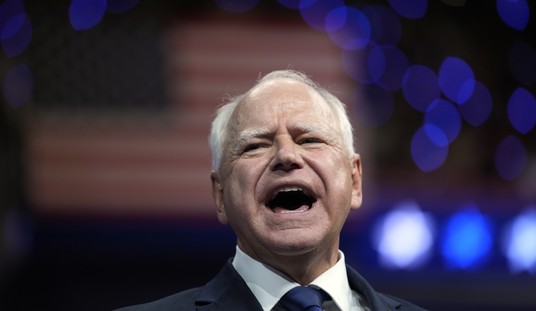In some ways, the latest PPP poll is a bit of an outlier. While three successive polls last week showed Mitt Romney slightly ahead of Ron Paul in Iowa, PPP shows Paul still barely edging Romney 20/19. But Paul has suffered the most significant drop in support in the last few days, and Rick Santorum has shown the biggest surge — making this a “photo finish”:
The momentum in the race is completely on Santorum’s side. He’s moved up 8 points since a PPP poll earlier in the week, while no one else has seen more than a one point gain in their support. Among voters who say they decided who to vote for in the last seven days he leads Romney 29-17 with Paul and Gingrich both at 13.
Santorum’s net favorability of 60/30 makes him easily the most popular candidate in the field. No one else’s favorability exceeds 52%. He may also have more room to grow in the final 48 hours of the campaign than the other front runners: 14% of voters say he’s their second choice to 11% for Romney and only 8% for Paul. Santorum’s taken the lead with two key groups of Republican voters: with Tea Partiers he’s at 23% to 18% for Gingrich, 16% for Paul, 15% for Bachmann, and only 12% for Romney. And with Evangelicals he’s at 24% to 16% for Gingrich, and 15% for Paul and Romney.
Other than Santorum’s rise the other big story of this week is Paul’s fall. He was at 24% earlier in the week but has dropped to 20%. That decline in support coincides with a precipitous drop in his favorability numbers. On our last poll he was at +13 (53/40), but that’s gone down 21 points on the margin to -8 (43/51).
As a series, the PPP poll has picked up on the trends in the race as well as the other pollsters. The last-minute surge for Santorum seen in the other three polls is confirmed in this survey. The drop-off for Paul looks more dramatic than in the other three, but PPP polled a couple of days later than most of the others, too.
As a discrete predictive survey, this poll has some issues, and those issues tend to favor Paul disproportionately. PPP surveyed “1,340 likely Republican caucus voters on December 31st and January 1st,” two days when most people had better things to do than to answer questions about politics. In contrast, the Des Moines Register poll took place over four days ending on Friday. More to the point, though, only half of the “1,340 likely Republican caucus voters” surveyed by PPP caucused with Republicans in 2008. Sixteen percent caucused with Democrats in that cycle, and over a third (34%) didn’t caucus with either party in 2008. Not shockingly, Paul wins 23% of those who didn’t caucus at all in 2008, and 28% among those who caucused with the Democrats.
Surely some newbies and Democrats will caucus on Tuesday with Republicans, but I seriously doubt they will comprise half of all caucus-goers — who, after all, could have caucused with Paul in 2008 as well. When was the last time that overall attendance at an Iowa caucus doubled over a previous non-incumbent cycle with a flood of newbies and members of the opposition party? That’s the predictive model that PPP used in this poll, and using that long-shot scenario practically defines the term outlier in predictive polling.
Among Republicans, Romney leads with 22%, followed by Santorum at 20%, and a tie between Paul and Newt Gingrich at 16%. Given the trend lines seen in all four last-week polls, I’d guess that this looks like a better predictor of the final result.








Join the conversation as a VIP Member